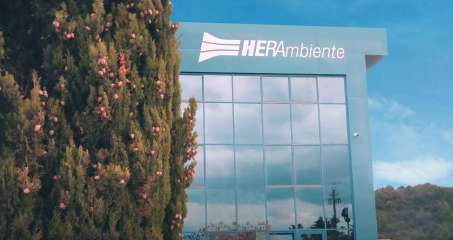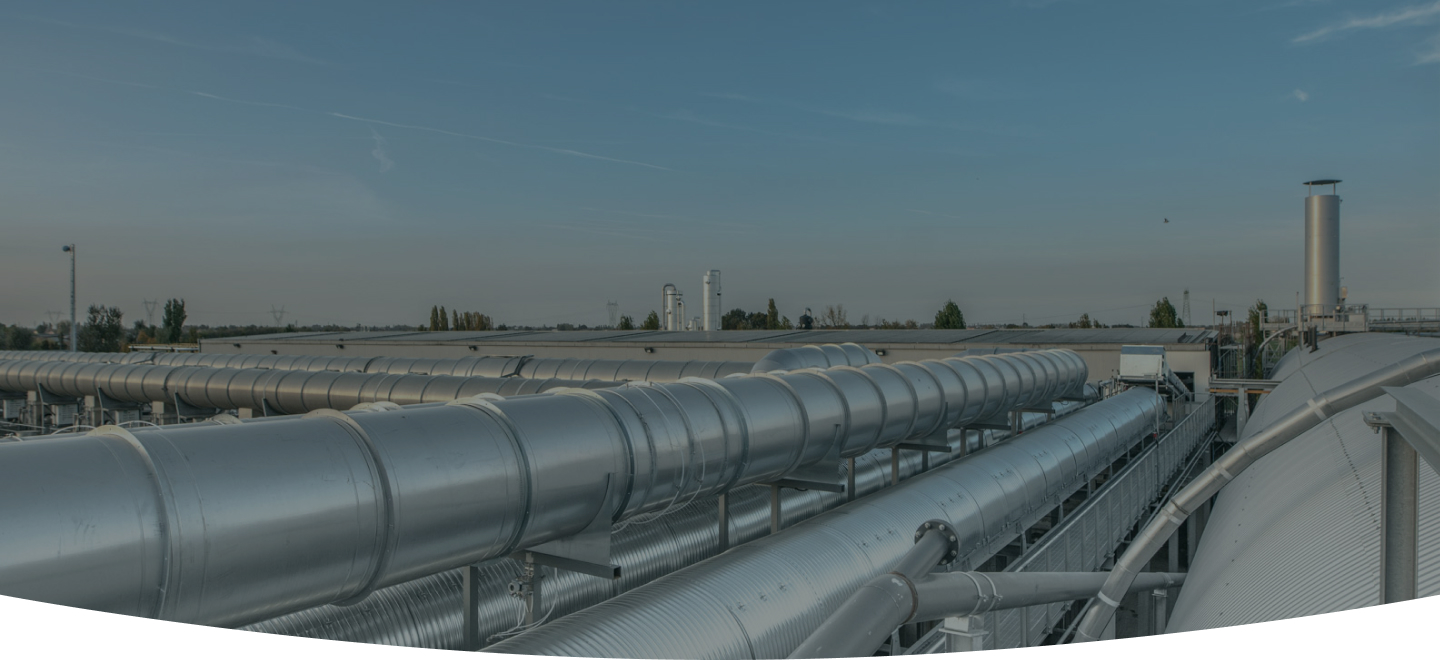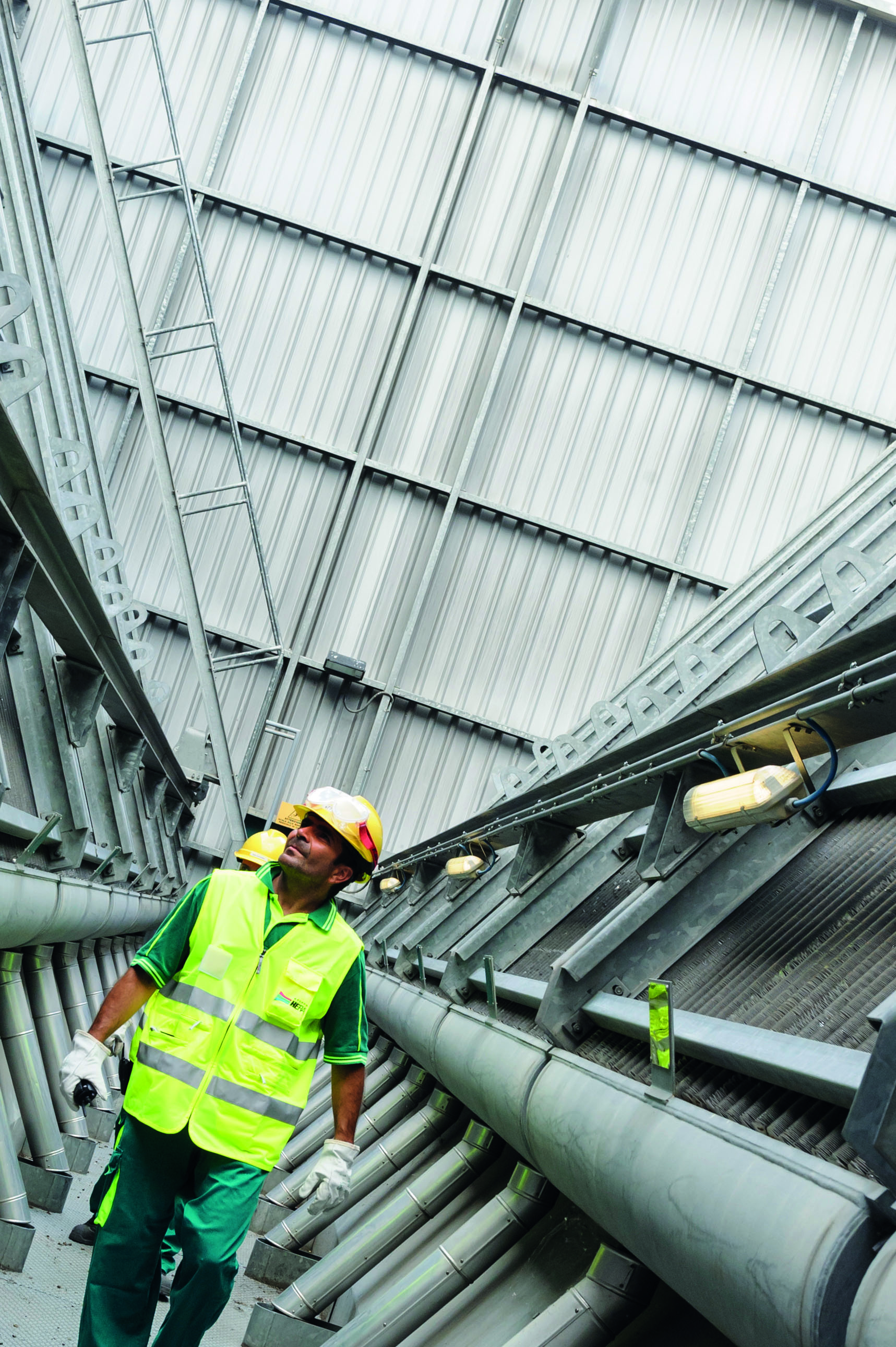Tutti gli impianti sul territorio | Herambiente
Seleziona categorie
 Compostaggio
Compostaggio
 Rifiuti Industriale
Rifiuti Industriale
 Termovalorizzatori
Termovalorizzatori
 Discariche
Discariche
 Selezione e recupero
Selezione e recupero
 Aliplast
Aliplast
Compostaggio
Nei nostri impianti di compostaggio trattiamo rifiuti urbani provenienti dalla raccolta differenziata, come scarti di cucina e sfalci di potature e li trasformiamo in compost: un fertilizzante con potere di ammendante agricolo. La frazione umida del rifiuto che deriva dalla separazione meccanica della raccolta differenziata viene invece trattata all’interno degli impianti di biostabilizzazione, la materia ricavata viene utilizzata per la copertura delle discariche o la bonifica di siti contaminati sostituendosi a materiale vergine.
- Impianto di Compostaggio di Ozzano Emilia (BO)
- Impianto di compostaggio e digestione anaerobica di Cesena
- Enomondo - Impianto di compostaggio e digestione anaerobica di Faenza (RA)
- Impianto di compostaggio e digestione anaerobica di Rimini
- Impianto di compostaggio e digestione anaerobica di Voltana (RA)
- Impianto di compostaggio e stabilizzazione di Ostellato (FE)
- Impianto di compostaggio, digestione anaerobica e produzione Biometano di Sant'Agata Bolognese (BO)
- Impianto di selezione, biostabilizzazione e recupero di Imola (BO)
- Biorg - Impianto di compostaggio di Nonantola (MO)
- Biorg - Impianto di digestione anaerobica e produzione Biometano di Spilamberto (MO)
Nuova energia ai rifiuti
Trasformiamo gli scarti non riciclabili in energia attraverso impianti che non si limitano ad incenerire i rifiuti indifferenziati, ma recuperano il calore sviluppato dalla combustione ricavandone energia. Per garantire la sicurezza di territorio e cittadini tutti i nostri impianti sono dotati di sistemi di controllo delle emissioni e i dati aggiornati sono pubblici e aggiornati in conformità agli obblighi di legge.
Termovalorizzatori
- Enomondo - Centrale termoelettrica di Faenza (RA)
- FEA - Termovalorizzatore di Bologna
- Termovalorizzatore di Ferrara
- Termovalorizzatore di Forlì
- Termovalorizzatore di Modena
- Termovalorizzatore di Pozzilli (IS)
- Termovalorizzatore di Rimini
- Hestambiente - Termovalorizzatore di Padova
- Hestambiente - Termovalorizzatore di Trieste
- CIS - Termovalorizzatore di Montale (PT)
A ogni rifiuto il suo trattamento
Il trattamento dei rifiuti industriali è un processo articolato, grazie alla nostra esperienza e alla solidità di Gruppo Hera, siamo in grado di gestirlo in sicurezza e ad un prezzo competitivo. I nostri flussi di trattamento e i 25 poli per la gestione dei rifiuti industriali sono creati per gestire al meglio la natura dei rifiuti da trattare.
- Centro di stoccaggio e pretrattamento di Ravenna
- Termovalorizzatore F3 Ravenna
- Forno FIS Ravenna
- Impianto chimico fisico di Lugo (RA)
- Impianto chimico fisico di Pozzilli (IS)
- HASI - Impianto di depurazione chimico fisico/biologico di Castelfranco di Sotto (PI)
- Impianto di gestione e stoccaggio di Padova
- HASI - Piattaforma di trattamento rifiuti pericolosi Castelfranco di Sotto
- Impianto di trattamento fanghi industriali di Bologna
- HASI - Impianto di trattamento rifiuti liquidi di Pisa
- Impianto DISIDRAT e Trattamento chimico fisico di Ravenna
- HASI - Impianto inertizzazione di Pisa
- HASI - Impianto soil washing di Pisa
- TAS Impianto di trattamento acque reflue industriali di Ravenna
- Impianto di trattamento chimico fisico di Modena
- HASI - Piattaforma di stoccaggio di Castelfranco di Sotto (PI)
- Centro di stoccaggio di San Vito al Tagliamento (PN)
- HASI - Impianto riduzione volumetrica di Pisa
- HASI - Impianto stoccaggio colli e stoccaggio cumuli di Pisa
- HASI - Impianto stoccaggio liquidi infiammabili di Pisa
- Centro di stoccaggio e pretrattamento di Ferrara
- Vallortigara - Piattaforma di trattamento rifiuti di Torrebelvicino (VI)
- Vallortigara - Piattaforma di trattamento rifiuti di Marano Vicentino (VI)
- SEA - Piattaforma di trattamento rifiuti di Camerata Picena (AN)
- ACR Reggiani - Piattaforma polifunzionale di Mirandola (MO)
- ACR Reggiani - Impianto di trattamento fanghi e inertizzazione di Mirandola (MO)
- ACR Reggiani - Impianto di trattamento inerti di Mirandola (MO)
- Recycla - Maniago 1 - Piattaforma di trattamento rifiuti speciali e produzione combustibile solido e liquido di Maniago (PN)
- Recycla - Maniago 2 - Piattaforma di trattamento rifiuti speciali di Maniago (PN)
- Recycla - Piattaforma di trattamento rifiuti speciali di Resana (TV)
- TRS Ecology - Piattaforma di trattamento rifiuti di Caorso (PC)
Lo stadio finale
Lo smaltimento in discarica rappresenta il livello finale della gerarchia nel ciclo integrato della gestione dei rifiuti e riveste un ruolo sempre meno rilevante. In discarica vengono avviate allo smaltimento alcune particolari tipologie di rifiuti, allo stato solido e fangoso, sia di matrice urbana che speciale, che non possono essere trattate in modo più sostenibile.
Massimizziamo le risorse selezionando e recuperando i rifiuti
I rifiuti urbani raccolti dai nostri servizi di igiene ambientale confluiscono agli impianti di recupero, dove subiscono un trattamento di separazione o selezione. Se differenziati i rifiuti vengono avviati a impianti di selezione e recupero per: recuperare la materia dai rifiuti differenziati secchi (carta, vetro, plastica etc. etc.), recuperare e avviare agli impianti di biodigetsione e compostaggio la materia differenziata umida (scarti di cucina e sfalci di potature). Se indifferenziati i rifiuti vengono avviati alla selezione per recuperare la frazione umida che verrà avviata a biostabilizzazione, tutto ciò che non può essere recuperato, invece, viene conferito in discarica o avviato al termovalorizzatore.
- Impianto di selezione e recupero di Castiglione delle Stiviere (MN)
- Impianto di selezione e recupero di Coriano (RN)
- Impianto di selezione e recupero di Ferrara
- Impianto di selezione e recupero di Granarolo dell'Emilia (BO)
- Impianto di selezione e recupero di Modena
- Impianto di selezione e recupero di Mordano (BO)
- Impianto di selezione e recupero di Voltana (RA)
- HASI - Piattaforma di stoccaggio e impianto di selezione di Castelfranco di Sotto (PI)
- Impianto di recupero della fibra di carbonio di Imola (BO)
Il gruppo Aliplast, il riciclo della plastica
Questa azienda di riciclo della plastica rappresenta una vera e propria eccellenza sul territorio nazionale: oltre alla raccolta, Aliplast si dedica a riciclo completo dei rifiuti di matrice plastica. Pioniera in Italia nel raggiungimento della piena integrazione lungo tutto il ciclo di vita della plastica, raccoglie più di 90.000 tonnellate annuali di plastica e lavora 90.000 tonnellate di prodotti finiti. I polimeri rigenerati in uscita sono sempre di alta qualità. Aliplast serve clienti che operano nel settore alimentare, cosmetico e dei prodotti d’igiene, arredamento, automotive, edilizia, elettrodomestico e cartario.
- Aliplast - Piattaforma di selezione e stoccaggio di Quinto di Treviso (TV)
- Aliplast - Impianto di trasformazione di materia di Carmignano di Brenta (PD)
- Aliplast - Impianto di trasformazione materia di Gualdo Cattaneo (PG)
- Aliplast - Impianto di trasformazione materia Borgolavezzaro (NO)
- Aliplast - Piattaforma di selezione e stoccaggio di Formigine (MO)
- Aliplast - Piattaforma di selezione e stoccaggio a La Wantzenau (Francia)
- Aliplast - Piattaforma di selezione e stoccaggio a Lòdz (Polonia)
- Aliplast - Piattaforma di selezione e stoccaggio a Onda (Spagna)
- Aliplast - Sede e Impianto di trasformazione materia (TV)
Cerca documenti di sicurezza per accedere agli impianti
Esplora la sezione e trova i documenti con tutte le informazioni di sicurezza e le norme comportamentali che è necessario conoscere per poter accedere agli impianti e svolgere in sicurezza le attività lavorative.
HeraRicercaDocImpianti
Scopri tutti i documenti per accedere ai nostri impianti
Una gestione sicura e trasparente
I nostri impianti sono certificati, tecnologici e allinati alle BAT Best available techniques europee: le migliori soluzioni tecniche impiantistiche, gestionali e di controllo in grado di garantire un elevato livello di protezione dell'ambiente attraverso, bassi livelli di emissioni di inquinanti e l'ottimizzazione delle materie prime utilizzate nel processo. Gestiamo i siti con la massima sicurezza e trasparenza monitorando e pubblicando costantemente i dati relativi alle loro emissioni.

Sei interessato a visitare uno dei nostri impianti?
Herambiente apre gli impianti a chiunque desideri vedere quale sia il percorso dei rifiuti: prenota on line la tua visita guidata.




